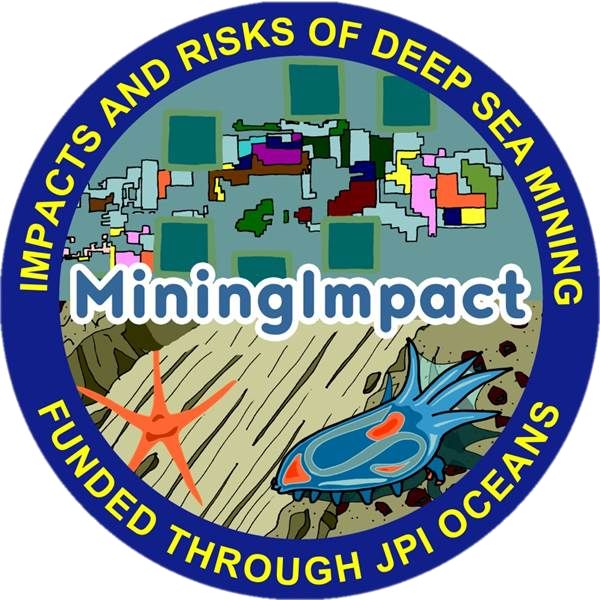WP 4 – Sediment Plume Dilution and Dispersion
The future use of (test-)mining collector equipment on the ocean floor and the subsequent return of mining products (sediment, water, abraded nodule debris) at or close to the sea floor will create a near-bottom operational and discharge plume of fine particulate material that will lead to
(i) artificial rapid re-deposition of sediments and bottom blanketing in the vicinity of the mine site ("near field"), potentially burying benthic organisms, clogging the respiratory surfaces of filter feeders and covering and diluting the food supply of most organisms (organic material on the seafloor), and
(ii) potential long-range lateral and vertical dispersion of fine-grained particles over several tens to hundreds of kilometres from the disturbance location ("far field"). Both processes will affect deep-sea ecosystem structure and functioning to a certain, presently unknown extent.
To date only very few studies have focused on analysing and modelling the scale of this impact at various environmentally relevant temporal and spatial scales, which is dependent on multiple local and regional factors such as the physical and chemical properties of the bottom sediments, the nature of the hydrodynamic regime (near field and far field), bottom topography, the type of mining equipment being used, and mining rate, amongst others.
The overall aim of WP4 is to develop scenarios for the prediction of the near-field and farfield fate of a mining-induced sediment plume under varying discharge scenarios, and to identify the possible environmental implications of plume dispersion and sediment redeposition.
The objectives to reach this goal are three-fold:
-
To obtain and evaluate high-resolution spatial and temporal hydrographic data (e.g. background mean flow velocities, tidal wave activities, degree of local stratification/mixing, etc.) from the DEA and the CCZ, with focus on a well-investigated prime manganese nodule area within the German license area in the CCZ (Fig. 1) in order to fully understand the hydrodynamic regime of that "test" area;
-
To obtain and evaluate information on particle concentrations, fluxes, and size distributions close to the seafloor (i.e. sinking and suspended particulate matter) as well as organic carbon and nutrient concentrations related to background natural sediment transport processes and fluxes as well as small-scale sediment disturbances;
-
To use the information from the above two objectives along with available and newly obtained bathymetric and geological information from WP1 to configure, implement and calibrate existing and specifically adapted deep-sea 3D coupled ocean circulation sediment transport models that will provide information on the probable fate of mining induced discharged sediments under varying discharge scenarios at both the local and the regional scale in and beyond our test area.

